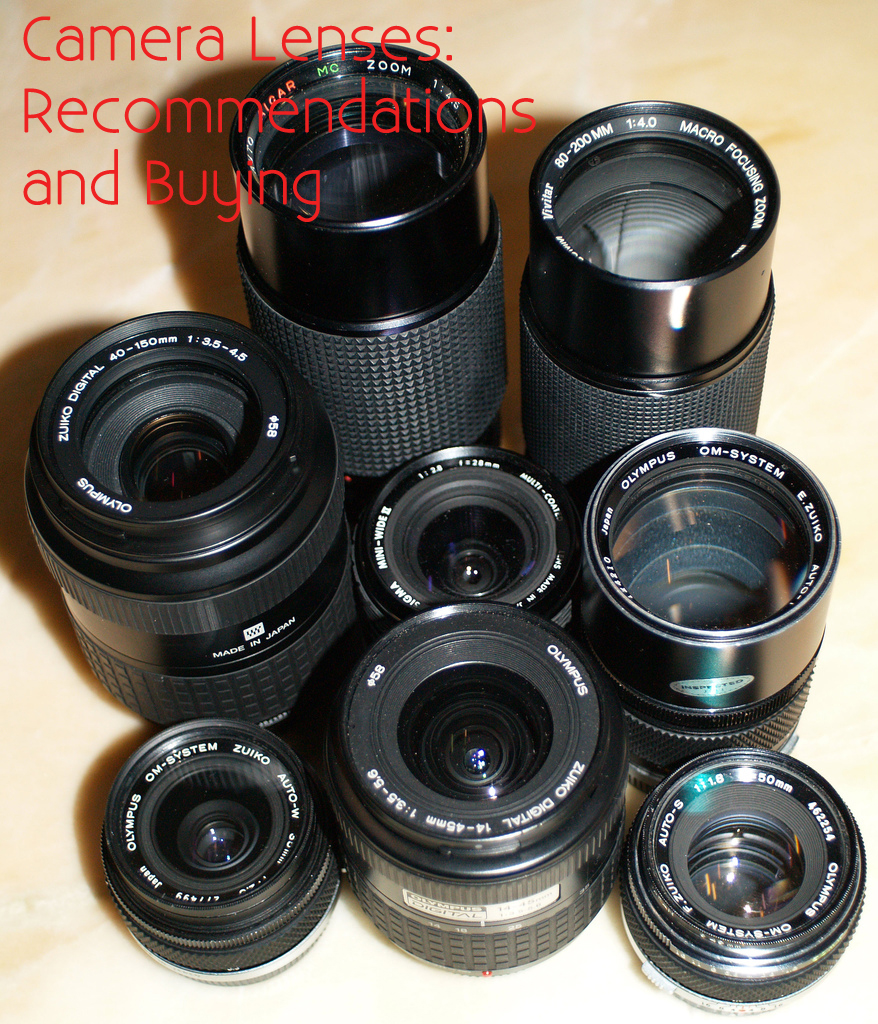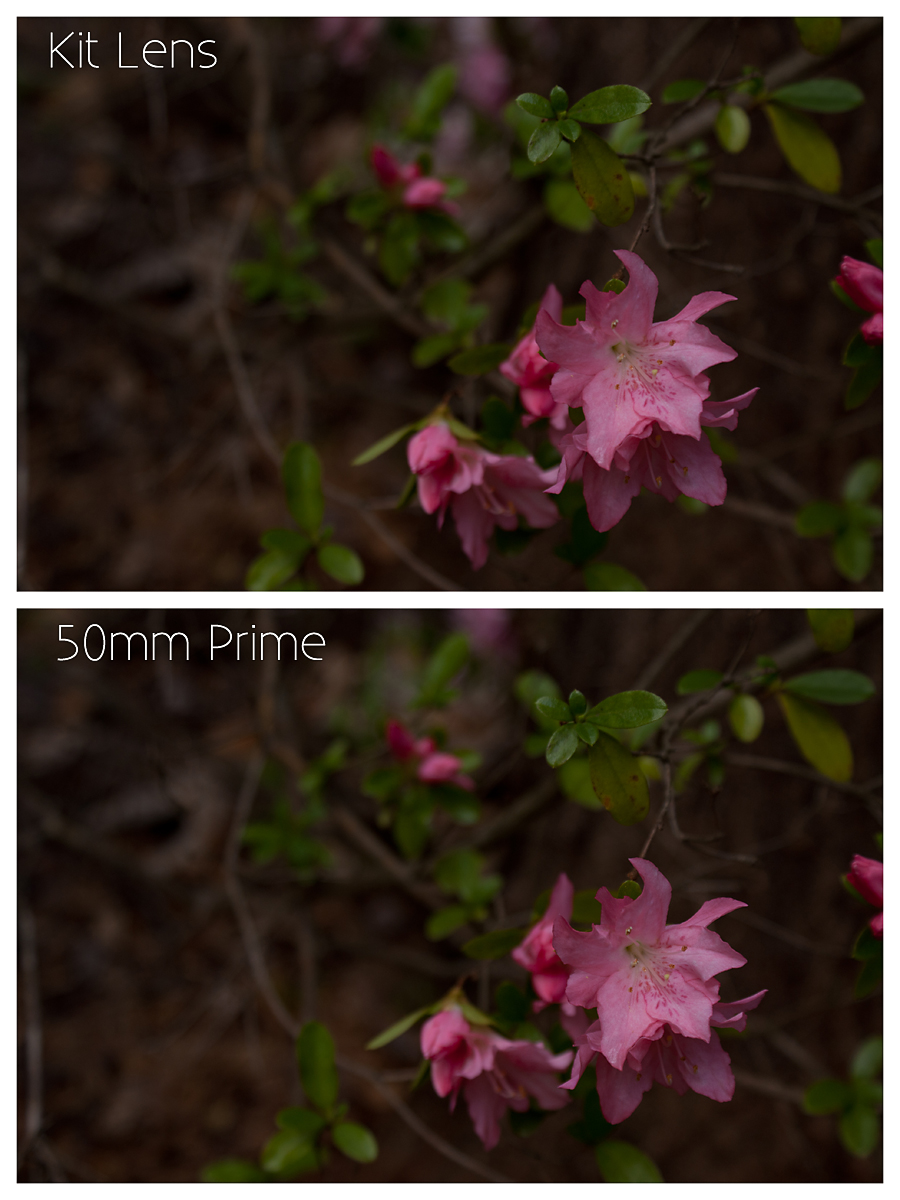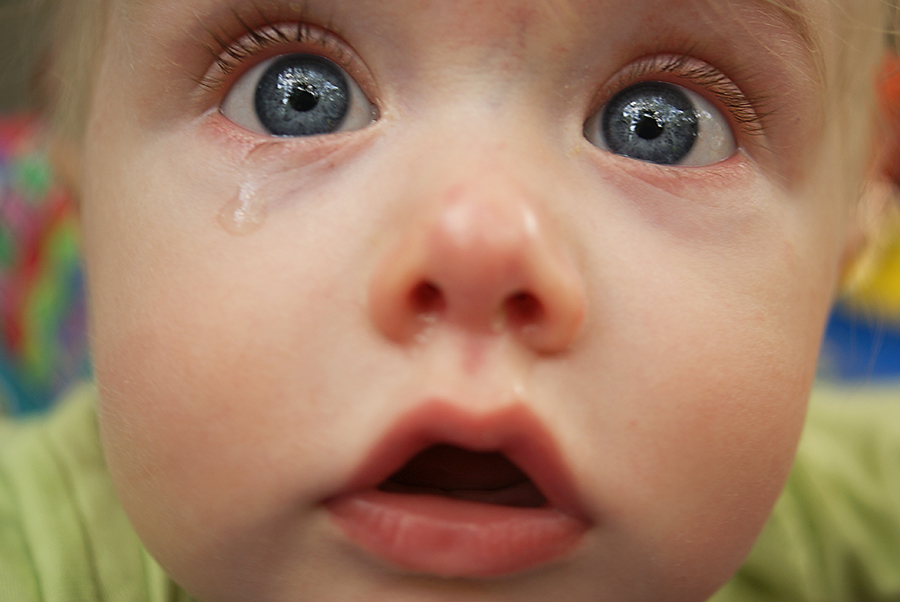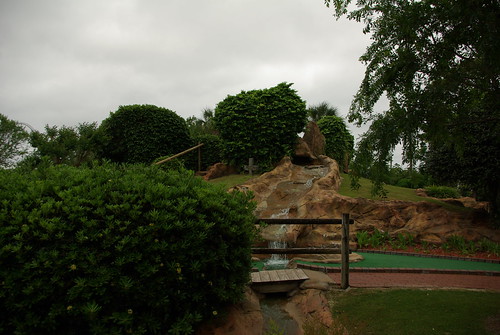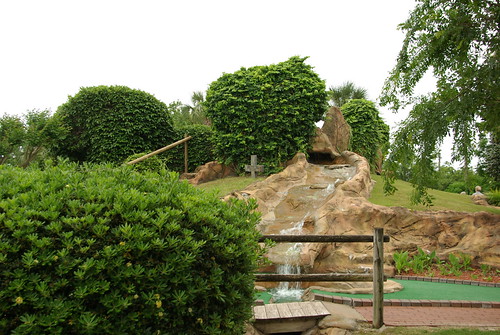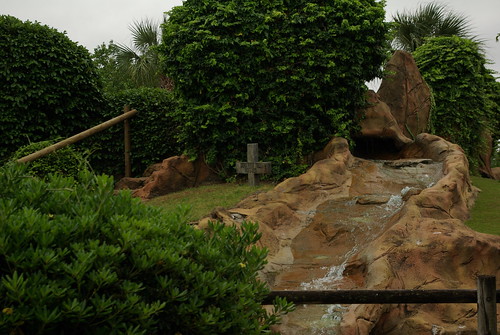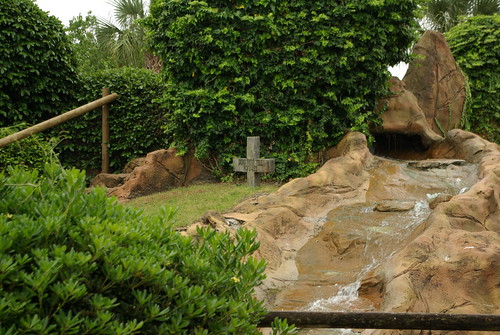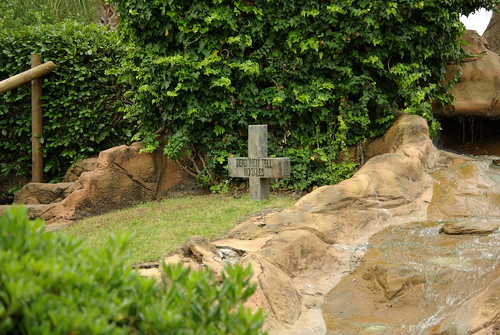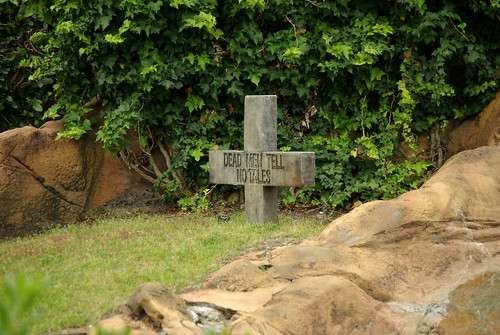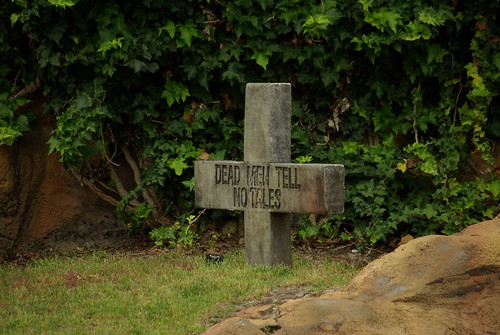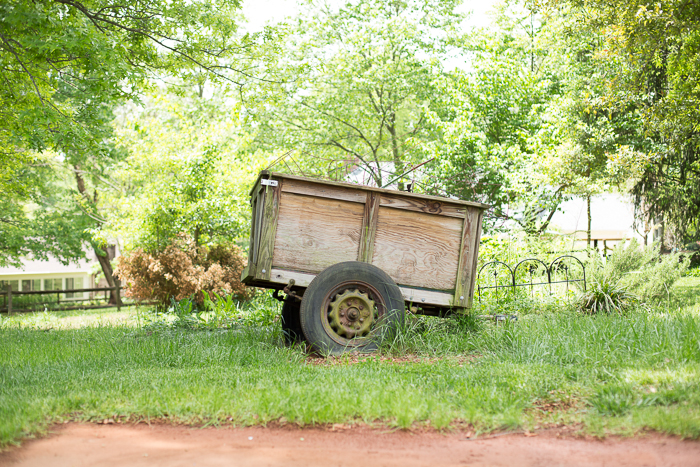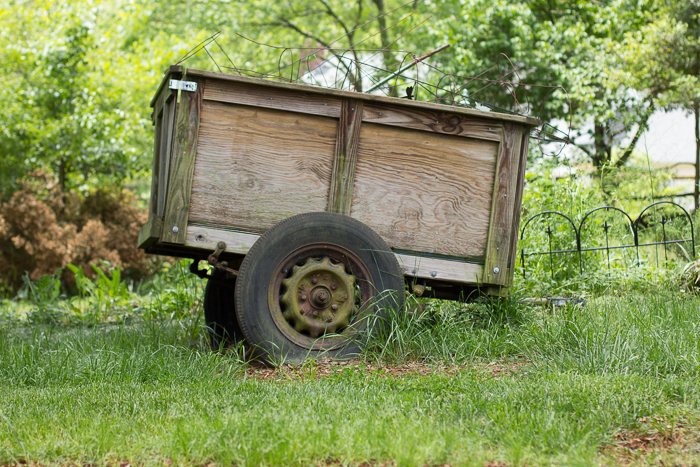04
2013There are so many choices when it comes to buying lenses that it’s almost overwhelming.
We’ve studied the difference between prime (fixed focal length) and zoom lens as well as the effects that focal lengths have on images. Hopefully, you have a sense for which focal lengths compliment your style/subjects as well as whether you crave zoom or prime lenses. In this post, we’ll learn about what additional factors you should consider before purchasing a new lens.
Why Your Lens is More Important than your Camera
As I’ve mentioned before, I’ve been using a SonyAlpha 200. The camera itself is a terrible professional camera. There is noise like crazy above ISO 400, the megapixels are only slightly better than a high-end Android or Iphone camera, and there are a ton of other limitations with this beginner grade camera body.
Yet, I’m shooting pro quality images on a camera most pros would consider just above the level of junk. How? I’m using quality prime (fixed focal length) lenses. We’ve already talked about how prime lenses are sharper than even the best zoom lenses and that’s a huge part of my success with this camera body. My lenses were all bought used or “open box”, yet each of them is far better quality than any ‘kit’ lens that might come with your camera.
So let me dust off my kit zoom lens (f/3.2-5.6 18-70mm zoom) and shoot the same scene with it and both my primes all other settings the same and let you compare the results.
Get real close to your monitor and look at the details in these two images. Especially with that top set of leaves and the speckling on the flower petals, do you see how the bottom image has more defined borders around these small parts? Do you see the difference between the veining in those top leaves?
Let’s explore some things you want to see in your lenses to make your investment count before you consider purchasing a new one.
Why Purchase a Fast Lens?
A fast lens is one who has a very wide aperture. Remember how wider apertures let in more light? When wide open, these lenses can capture an image with a much faster shutter speed than a lens with a wide open aperture of f/4 or so.
Aperture ranges from 1.2-2.8 are generally fast lenses. On a prime lens f/1.2 to f/1.8 is pretty standard as the fastest. On a zoom lens, usually the fastest you can get is f/2.8.
Fast lenses (especially the zooms) cost a fair bit more than their slower counter parts. Why is it worth it to spend more? Because creating an aperture that opens as wide as 2.8 is a very intricate process, fast lenses generally also have quality builds, quality glass, and a larger number of elements. Finally, apertures 2.8 and greater produce the beautiful blurred background bokeh that’s so popular.
What Lenses should I Invest in First?
I’m not a know it all in this area of lenses, but there are two lenses I would recommend as your first lens purchase after your kit lens depending on both your sensor size and your primary subjects (as discussed in our lesson on focal lengths).
I would recommend a 30mm or 35mm f/1.7 to f/2.8. All of the most popular SLR manufactures have one of these right around $200-300 new. On a crop sensor this focal length is about the same as what our eyes see naturally. Objects in your images will look roughly the same size as you perceive them to be in real life. It’s great for landscapes, half or full body portraits, group shots, smaller rooms, and some macro work (depending on your lens). I use my 30mm almost exclusively for newborn and macro imagery (because my 30mm is a macro lens). Sometimes I pull it out to capture toddlers who like to be near me when I photograph them and I use it frequently in homes where I need to be closer to my subject than I prefer because of the size limitations of the room.
The second lens I would recommend is a 50mm f/1.7 or f/1.8. This lens runs from about $150-200 new. On a crop sensor this is more zoomed in than your normal vision. This is a fantastic lens for capturing details, portraits of 1-4 people, closer landscapes, and for avoiding distortion in portraits. I use my 50mm to put some distance between myself and portrait subjects most frequently (No adult wants me 2-3 feet away for a head shot… that’s just uncomfortable). However, of my two lenses it’s the faster one… so I also pull this one out whenever my lighting drop is very minimal as well as for the yummy bokeh that the f/1.7 aperture creates .
Either of these two lenses will give you a feeling for “focusing on your feet” with a prime lens as well as the difference between a fast and slow lens. Additionally, you’ll get a feel for whether you would eventually prefer a wider or more telephoto focal length; and if you love the focal length, you’ll learn that you’re willing to invest in the pricier f/1.2 or f/1.4 version of that lens.
At the end of this post I’ll feature affiliate links to these two lenses on Amazon for you to look at by your specific manufacturer. As a full disclosure: I wouldn’t recommend these lenses if I hadn’t done the research on them (or used them) and I only receive money from these links if you purchase something while on Amazon.
If you have a ton of extra cash flow or have both of the above lenses, the following are lenses are what I would recommend you researching and choosing between based on the images you most enjoy creating.
Prime Lenses:
24mm f/1.4 up to f/2.8
85mm f/1.2 up to f/2.8
90mm or 100mm Macro f/2.8
Zoom Lenses (these cost more than the average camera body! eek!):
24-70mm f/2.8
70-200 f/z.8
Where Can I get Quality Lenses?
First, here’s a handy Cheat Sheet on reading the number on your lenses before your purchase.
Next, I’d recommend staying with your camera manufacturers lenses with a few exceptions. Tamron and Sigma make pretty good zoom and fixed focus Macro lenses that are compatible with the top three (Canon, Nikon, Sony, and sometimes Olympus). Also, one of the deciding factors in purchasing Sony for me was that I could purchase extremely inexpensive and high quality used Minolta Auto Focus lenses. For Sony users this is sometimes very lucrative: I bought my 50mm f/1.7 for $50. (There’s my one and only Sony plug. Ha!).
You can purchase lenses new at a local shop (call first for availability), your camera’s manufacturer website, or Amazon.
However, I’d highly recommend shopping used especially for the 30 or 35mm or 50mm. You can often save quite a bit buying used or ‘open box’ and sacrifice very little on quality (you might find marks on the outside of the lens, for example). Some used stores even give free warranties. Stay in the like new to excellent- categories to make sure you don’t have problems. I struggle with sites like Ebay, especially if the seller is out of the country and doesn’t offer a money back guarantee. However, I have purchased from Craigslist (and would again): bring your camera and your laptop if you own one for a bigger view of the images, and meet in a public place. A little research may also find manufacturer-specific enthusiast forums with private buy/sell/trade areas and for those looking for something specific forums might be well worth the try (I just bought an a77 camera body off a Sony Specific forum!).
If you’re going used (most have new as well) online, try the following sites (not affiliate links):
What Should I look for in Buying Used?
If you’re taking the chance on a used lens not from one of these reputable sites (maybe from Ebay, Craigslist, a forum, or a personal friend), make sure to evaluate then lens as soon as you get it. Here’s a very basic list of what to look for:
- Lens outside may have some scratches or surface wear but no dings or dents which would indicate a fall.
- Nothing should rattle around inside the lens.
- Zoom lenses should zoom smoothly without catching.
- Aperture should stop down and up throughout the full range. Check images on your LCD screen after you’ve taken them. Your focusing screen will always show the wide open aperture unless you’re using a DSLT, but I’d still check on the screen even if I did have a DSLT. Better yet, upload the images to a computer to evaluate if you can.
- Front and back glass should be free from scratches or haziness on visual inspection. Some dust like spots are okay and shouldn’t effect your lens quality.
Final Thoughts On Lenses
Find what you love and use it. Some of you will find you’re a prime lens lover. Others will prefer a zoom lens. Some of you might like a little of both. That’s okay! Enjoy learning situations that call for a certain type of lens (zooms for a wedding party) or certain focal lengths (18-24mm for a very wide view).
Play with lens distortion for fun. I love this old snap of Sedryn simply because the lens distortion makes it that much more hysterical (or pitiable if you’re a more compassionate type)!
Oh, and it’s worth it to rent an expensive lens before purchasing it for yourself!
Specific Lens Recommendation Links
In alphabetic order so no particular manufacturer enthusiast gets their feelings hurt :-p (and including Pentax with the big three because one of our classmates shoots Pentax). With Canon and Nikon some lenses are only functional on a crop sensor. Most of you will do fine with that lens, but if the idea of ever upgrading to a full frame sensor camera appeals to you, do your research and order the lens compatible with a full frame camera body. I think most of the following are crop-specific lenses… but I’m not really sure.
Canon
Canon EF 35mm f/2
Canon EF 50mm f/1.8
Nikon
Nikon 35mm f/1.8G AF-S
Nikon 50mm f/1.8D AF Nikkor Lens
Nikon 50mm f/1.8G AF-S NIKKOR FX
Pentax
Pentax 21987 DA 35mm f/2.4
Pentax DA 35mm f2.8 Macro Lens
Pentax DA 50mm f1.8 lens
Sony
Sony 30mm f/2.8 Macro (I have this one)
Sony 35mm f/1.8
Sony 50mm f/1.8
Minolta 50mm f1.7 AF Lens (I have this one)
Let me know if these recommendations help you (or your spouse… hint hint) make a purchase.
21
2013Focal Length
Last week I threw around the term focal length a lot without defining it. The technical definition of focal length is beyond the comprehension of anyone whose not really engineer minded. If you’re really interested, here’s a wikipedia article. For our purposes, what we need to know is that focal length determines the angle of view; the longer the focal length, the smaller the angle of view and the more we have a sense of being “zoomed in” to the subject.
The focal length of lenses fall on a spectrum from super wide angle to telephoto. Wide angle lenses capture more of a scene while telephoto lenses zoom in to the capture only part of a scene. The spectrum runs from around 8mm (wide angle) to 5000mm+ (telephoto).
Here is a nearly full range of focal lengths used to take the same shot from the same location. This will give you a feel for how focal lengths affect the resulting image. All of these images are shot with a crop sensor so an 18mm lens is creating an image that would be more like what 24mm lens would on a full frame camera.
In the rest of this post we’re going to get into the nitty gritty of lens focal lengths, the distortion different focal lengths create, and when to use each focal length. We’ll start at the wide end of the spectrum and work our way to the telephoto end. I’ll also mention a few specialty lenses that can be creatively fun!
This following is a reference article, so feel free to skim over just the lens focal lengths that catch your eyes or that you already own.
Read More»14
2013This is a quick aside lesson that I didn’t plan for! As I started the focal length post on camera’s I realized that describing focal lengths is difficult because they’re affected by the size of your sensor. I’m used to describing things as if I were shooting full frame 35mm film so in next weeks post on focal lengths, I will be describing lenses that way.
The problem is all of us actively participating in this class (except for Amanda-lucky duck!) shoot on a crop sensor. So I’ll also include a sentence or two in parenthesis describing the difference on a crop sensor for those focal lengths most affected by a crop sensor in the following post. But for now, let me tell you the difference between crop and full frame sensors.
What is a Full Frame Sensor?
A full frame sensor is the same size as a 35mm piece of film.
If you’re a beginning photographer taking or observing this class, you most likely do not have a full frame camera. Full frame camera bodies (without a lens) cost upwards of $2300 (you might find a used one hovering around $1800). I do not own a full frame camera nor will I own one when my camera body upgrade arrives.
What is a Crop Sensor?
If a full frame sensor is the same size as a 35mm piece of film, then it follows that a crop sensor is ‘cropped’ or smaller than a 35mm piece of film.
At first this doesn’t seem like a big deal. Sure it’s a smaller sensor, so obviously the picture quality is not as great, but that doesn’t seem like a huge trade-off in regard to camera price.
The big deal is because lenses are built for a 35mm sensor/film the focal length plane has changed. So not only is the sensor sized cropped, but the actual image taken is cropped as well. A lot of this depends on a the ratio of the sensor size to a full frame sensor, but I’m not going to get that technical. The following is the short story.
Shooting with a Crop Sensor ‘Zooms’ the lens Focal Length
On average a crop sensor zooms or crops your frame around 15-25mm. This makes your focal length act as if it were 20-30mm longer than what the lens is labeled.
For instance, on a full frame camera a 50mm focal length lens is considered closest to what the human eye sees. 50mm is referred to as a normal lens for this reason. This is an image of taken by a 50mm on a full frame camera.
This is the same image from the same spot taken on a crop sensor also with a 50mm lens. The crop sensor appears to make the lens zoom in when in reality it’s just the smaller sensor size creating that affect.
Essentially, on a crop sensor a 50mm lens becomes a 75mm lens. So on a crop sensor, a “normal” lens is actually either a 30mm or a 35mm to account for how the crop sensor zooms in that 15-25mm.
Is that clear?
I know crop versus full frame sensor is an extremely ‘advanced’ concept in the photography world. But I totally felt that if I didn’t explain the difference before the focal length lesson that things would get confusing for all of us.
I may have confused you more… but what you really need to know is that when I describe a lens in the next post that you’ll need to mentally add 15-25mm to that lens to see what the effect will be on your crop sensor. So an ultra wide lens (as you’ll learn next week) will likely only be a wide angle lens on your crop sensor.
I also want you to hear now that some lenses will not work on a full frame sensor. They’re built for a crop sensor and will only work for a crop sensor. So if you have an inkling that one day you might like to work on a full frame sensor, then invest in lenses that work on both crop and full frame sensors.
***Much Thanks to Amanda for taking these quick snaps on her crop and full frame cameras so that you could visualize the difference!. 🙂
07
2013A Little Class Itinerary Note
We’re coming up on a half year of working through this class! I find that hard to believe!
I’m extending your Storytelling with Images “due date” until Friday, May 24th. Again, due dates are relative because this is totally a jump right in wherever you are sort of class. So jump right in. But I’ll be featuring all of my students again on Tuesday May 28th. So if you’d like to be featured then put your assignments into the Quiet Graces Free Beginner’s Photography Class Flickr Group on or before Friday, May 24th 🙂
There will be no assignments for the next three weeks to give you time to finish this super intense Storytelling with Images series. If you’ve finished all the assignments, go back and revisit the assignment that challenged you the most. I always enjoy redoing some of these key assignments.
For the next three weeks, we’ll have three short posts on Camera Lenses. All will be simply informative to give you time to finish up and to give me time to dive into writing June’s series on shooting in Manual Mode and another super secret writing project that has nothing to do with photography but will likely be announced the last week in May as well.
A few questions for you to answer in the comments as I plan/write manual mode lessons: How is program mode working for you? What has been hard about it for you? Have you got a good handle on using program mode and thinking about exposure compensation? Do you have any program mode questions before we dive into manual mode?
Any questions other questions, class? If so, jump into the comments. If not, let start getting a little information on lenses.
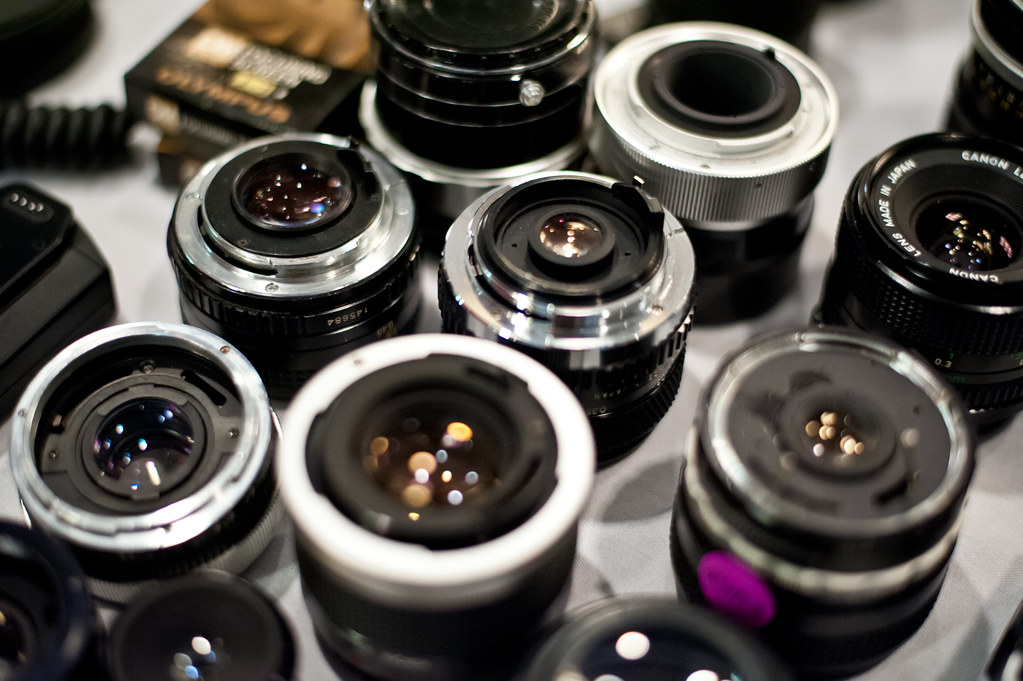
Image Courtesy KayOne73 on Flickr
What Are the Main Lens Types?
There are two different types of lenses on the market today: zoom lenses and fixed focal length (or prime) lenses. Most of us are familiar with zoom lenses since this is what usually comes installed within Point and Shoot Cameras or as part of a beginner DSLR kit. Yet, most beginner photographers are unaware of prime fixed focal length lenses. In this post I’ll define and do a pro/con comparison of zoom and prime lenses. I want you to know offhand that I am most definitely a prime lens girl, I’ll try to be unbiased in the pros and cons 🙂 Know that almost every photographer prefers one over the other and that it’s totally okay to do so!
Zoom Lenses
A zoom lens is probably the lens most find familiar. Almost all DSLR camera kits come with a zoom lens and most Point and Shoots are also equipped with zoom lenses. The photographer manually manipulates the lens to decide how much of the scene they will capture. On a DSLR you change the focal length by twisting the lens in and out. On a Point and Shoot, you usually have a button control that zooms in our out. We’ll define focal length a bit more in our next lesson, but for now know that the zoom lens has a variable focal length which changes the amount of the scene we can capture.
Pros of a Zoom Lens
- Able to capture a scene in multiple ways as you ‘zoom in’ closer to the action
- Can be used for work that requires multiple focal lengths without changing your lens. For instance, you can photograph both the just the bride and groom kissing as well as the entire wedding party without switching lenses.
- You don’t have to switch lenses for different situations. For instance, if your living room is small my 50mm might put me too close to your kids to capture both of them playing at the same time. Because I use prime/fixed focal lenses, I will have to switch lenses to capture both kids playing. While you, using a zoom lens, will just zoom out.
- Less gear to carry around your bag. A 18-55 or 70mm and a 70-200mm zoom will cover most any situation the average photographer comes. While in prime lenses I would need an 18mm, 35mm, 50mm, 85mm, 100mm, and 200mm lens to cover the same range!
- Carrying less gear means even if you buy quality fast f/2.8 zooms you might spend less than a prime lover whose goal is to cover the same range of focal lengths.
- In general, a zoom lens is typically cheaper than prime lenses unless you’re buying a quality fast f/2.8 zoom lens.
Cons of a Zoom Lens
- Heavy. I know a few wedding photographer friends who have developed carpal tunnel syndrome from carting around 70-200mm lenses.
- Things are not as sharply focused as a prime lens. Because they are more complicated to manufacture, zoom lenses often have a range that is most sharp. For instance on an 18-55mm lens, the 30-40mm range will most likely produce the sharpest images.
- Can be very expensive if you want a ‘fast’ lens with an aperture of f/2.8
- If they don’t have a higher aperture of f/2.8, you may find yourself needing to use flash in a darker building to both freeze the action or capture the scene.
- Tempt a photographer to stay in one place rather than move around to frame a shot because the photographer thinks “they can just zoom in.” This can stifle creativity if the photographer isn’t careful.
Fixed Focal Length Lenses (or Prime Lenses)
Prime lenses do not zoom. Using a prime lens is sort of like looking through a magnifying glass: to see the object closer you move the glass closer. With prime lenses you will “zoom with your feet.” At first, moving around to zoom is an unusual or inconvenient situation, but it also helps me to focus on getting the best composition. Some people love primes and some people hate them. It all depends on what and how you like to shoot.
Pros of Prime Lenses
- Lightweight. An 85mm prime lens is way lighter than the 70-200mm zoom that covers the 85mm range.
- Typically produce sharper images than their zoom counter parts.
- Primes are generally better for low light because their widest apertures are wider than zoom counterparts. You can purchase primes with apertures of f/1.2 and it’s hard to find a zoom with an aperture greater than f/2.8
- You can select a focal length specific to the subjects you enjoy most. If you want to photograph scenic vistas, you’ll be snatching up a prime in the 14-28mm range. If you photograph people, you’ll pick between a 50mm or 85mm lens. If you love macros, you’d grab a prime 60, 90, or 100mm macro. Specialty is a strong point with primes.
- You are forced to “zoom with your feet” with a prime lens. This can promote more creativity in image composition because you are unable to stay in one place and zoom in.
Cons of Prime Lenses
- Can be expensive. A prime lens with an aperture of f/2.8 or wider generally costs more than a ‘slower’ zoom lens.
- To cover the whole range that a zoom lens covers you’ll likely have to spend as much if not more than the cost of buying one quality fast f/2.8 zoom. Buying an 18mm, 35mm, and 50mm zoom lens with fast apertures will be way more expensive than a single 18-55mm f/2.8 zoom.
- Super fast primes of f/1.4 and f/1.2 are incredibly expensive.
- You’ll need to purchase and carry more prime lenses if you shoot a huge variety of subjects (macro insect shots, panoramic zoom scenes, and portraits for instance).
- You can’t zoom in without moving your body. This takes some getting used to… but it’s also a huge pro (see above).
How Do these Lens Types Apply to Point and Shoot Users?
If you’re using a point and shoot camera you could have either a Prime Lens or a Zoom lens just like the rest of us. But Point and Shoots get a little confusing because they may also have “Optical Zoom”.
Here’s the short story.
- Your camera has a prime lens if you don’t see the lens on the outside of your camera moving in and out as you zoom.
- Your camera has a zoom lens if you do see it moving in and out as you zoom in.
- If your camera has Optical Zoom that does not mean it has a zoom lens. It means your camera has the ability to crop your image before you release the shutter.
- My phone camera is a fixed focal length lens with optical zoom. My first digital point and shoot had a zoom lens that when you zoomed all the way in also had a “6x Optical zoom” feature that cropped the image in camera even more.
- When you enter the optical zoom zone of your camera, remember that your image quality is going down just as if you cropped the image afterward in photo editing software. So if possible, get closer to your subject rather than use optical zoom.
